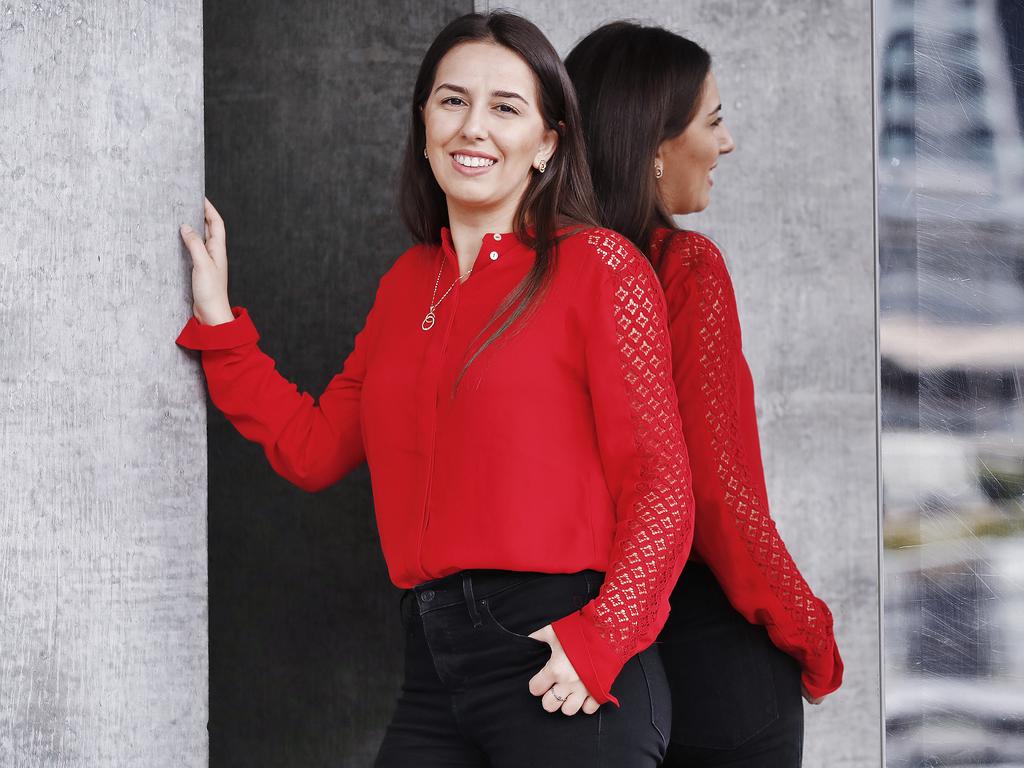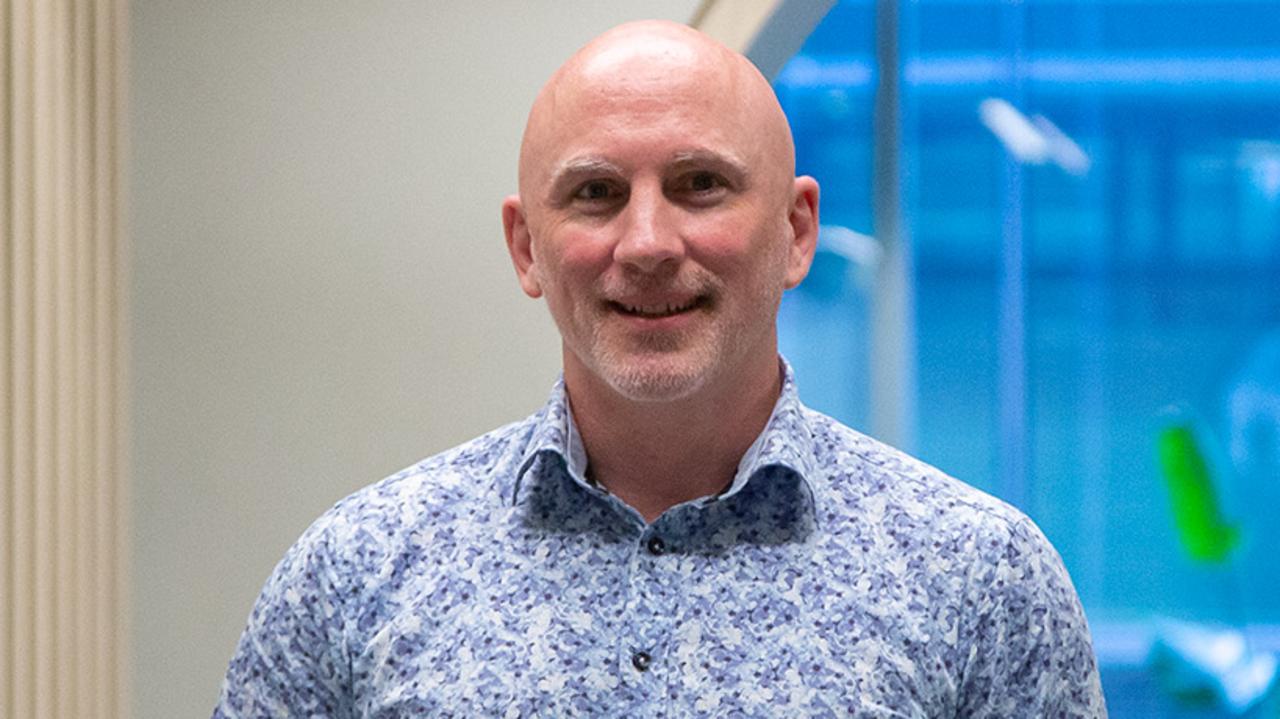Seven body language and voice hacks for your next job interview or work meeting
The right body language and voice techniques can make a difference when it comes to landing jobs. Experts share their best advice.
Communication is about more than just the words we say – it’s also the way we move and speak, and the expressions we show.
The right body language and voice techniques can make the difference between building rapport, landing jobs and influencing decision-makers, or giving off the wrong vibe, not being taken seriously and being overlooked for opportunities.
So how can you harness non-verbal communication for career success? Experts share their best advice.
KEEP YOUR EYES STILL
Body language and voice expert Dr Louise Mahler says there is a perception in western culture that people who move their eyes too much are not trustworthy.
“When we try to still them, it can feel as though we cannot think (but) keeping eyes
still and to the front can be done,” she says.
“Watch our politicians, having their eyes front is a critical skill for them – Penny Wong
excels at it and it is a skill that anyone wanting to progress their career must have.”
It is a technique Sydney business process consultant Brooke El-Azzi has taken on board.
“Keeping my eyes still is a skill that has been critical to my career advancement, one I
learnt through practising the techniques Louise taught me and has helped me to
land jobs and be seen as a top performer amongst my peers,” she says.

BEWARE VOCAL FRY
This is the croaky sound that occurs when someone tries to make a sound but they do not have enough air in their lungs.
“In singing, male voices can use vocal fry to reach very low notes, but in a professional sense it has little value,” says Mahler, who was recently named Keynote Speaker of the Year by the Professional Speakers Australia.
“When we vocal fry we give the perception that we lack commitment and caring, traits that are not beneficial for career progression.
“Ensure that you are using all the air available to you when you speak.”
KNOW THE POWER OF THE NOD
When people are tense or defensive, they jam the muscles at the back of their neck and send a psychological message to the person they are talking to that they are frightened, angry and frozen, Mahler says.
“Nodding tells the listener we are in tune with them, listening to what they are saying,” she says.
“Keeping those neck muscles loose and flexible and getting into the habit of nodding as we listen is a powerful skill to learn if we want to advance our careers.”

DON’T BE SHRILL
Mahler says the average woman’s voice is an octave higher than the average man’s and while that should not be considered a negative, there is a perception that lower voices depict leadership.
“Perceptions are a difficult thing to shift, which means that those aspiring to leadership need to be aware that they may need to make changes to their tones,” she says.
Rather than simply lowering their voice, she says the key is to “bring our very best vocal sound out”.
“(It) means being aware of the tension that strangles our voice and working on our tones to not go higher than where our voice comfortably sits,” she says.
SMILE MORE
Smiling not only makes a person look less aggressive but it can help with the way they speak.
“(It lifts) the cheeks, which is a critical part of creating what is known as the ‘Duchene Smile’ (which) helps to keep our throat clear and lets us produce sound for our voice clearly and
smoothly,” Mahler says.
“Smiling has not always been seen as part of the classic school of leadership, however with the popularity of leaders such as Jacinda Ardern, smiling is the new trend in helping us to the positions we seek in business and a trend I applaud.”
SPEAK UP WITHOUT UPTALK
Mahler says some people have a habit of raising their voice upwards at the end of sentences, as though they are asking a question.
It often becomes stronger when people are stressed.
She says the upwards inflection can “totally undermine our gravitas” and lessen the effect of what is being said.
“We do it because we do not want to be too intimidating or push our opinions onto others,” she says.
“The problem is that it makes us sounds weak, which is harmful to our prospects in a career or interview setting.”

Leadership expert and Professional Speakers Australia member Anneli Blundell says a questioning tonality is her number one “don’t” in a job interview.
“People interpret confidence in voice tone as equivalent to competence in the workplace,” she says.
“People will unconsciously downgrade your confidence – no job for you.”
TAKE UP SPACE
In a job interview, Blundell recommends jobseekers expand rather than shrink into their space.
“Have an open posture with your head up and centred on your shoulders; do not have your weight on one hip or be rocking back and forth or crossing your arms,” she says.
“All are unconscious signifiers of (a lack of) confidence.”
HOW TO USE BODY LANGUAGE TO YOUR ADVANTAGE IN A VIDEO MEETING
DO use warm facial expressions – when presented with a neutral expression, our brain encodes it as a negative expression so “listening face” is often off-putting. Think eye contact, head nodding, eyebrows up, head tilted to the side.
DON’T over gesticulate – too much movement and too big gestures can be hard for the camera to follow so you go fuzzy and it’s a non-verbal distraction. If you are using a virtual background, you may lose limbs with too much gesticulation, so keep gestures in front of your body.
DO leave a pause – its difficult to interpret who is supposed to speak when in a video call. If one-on-one, reduce the risk of speaking over one another by giving your response then stopping and holding. It will give a very clear indicator you have finished and the other person will get used to the rhythm of your speaking.
DON’T ignore the non-verbal cues – as soon as I see someone look down and put their arm forward, I know they are looking to unmute. It’s the new non-verbal cue that someone is ready to speak. In a room, eye contact is a big signaller (but in a video call) we have to orchestrate the informal so people know when they are expected to do what.
DO keep the camera on wherever possible – this will keep as many non-verbal cues available to the other person as possible.
SOURCE: Anneli Blundell, leadership expert and Professional Speakers Australia member
More Coverage
Originally published as Seven body language and voice hacks for your next job interview or work meeting





